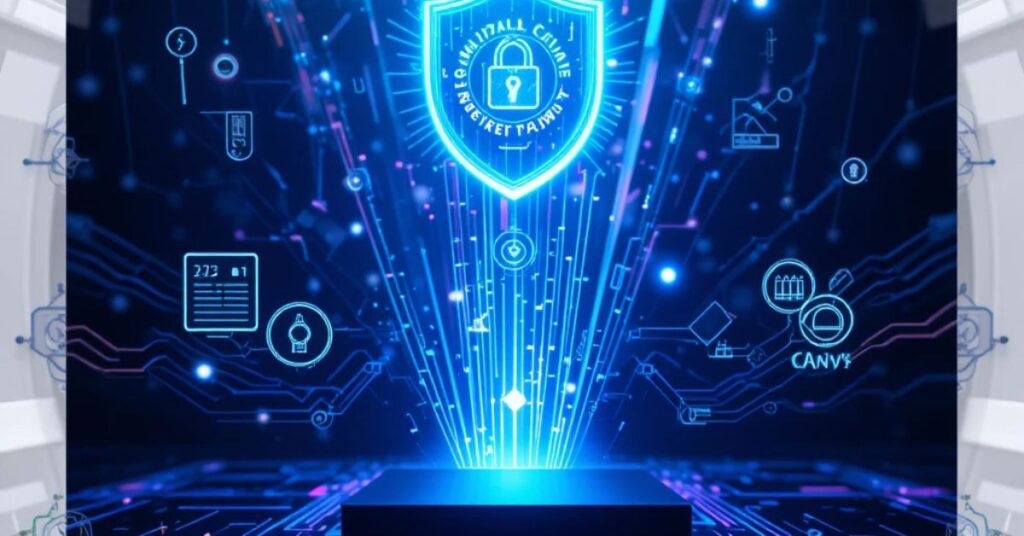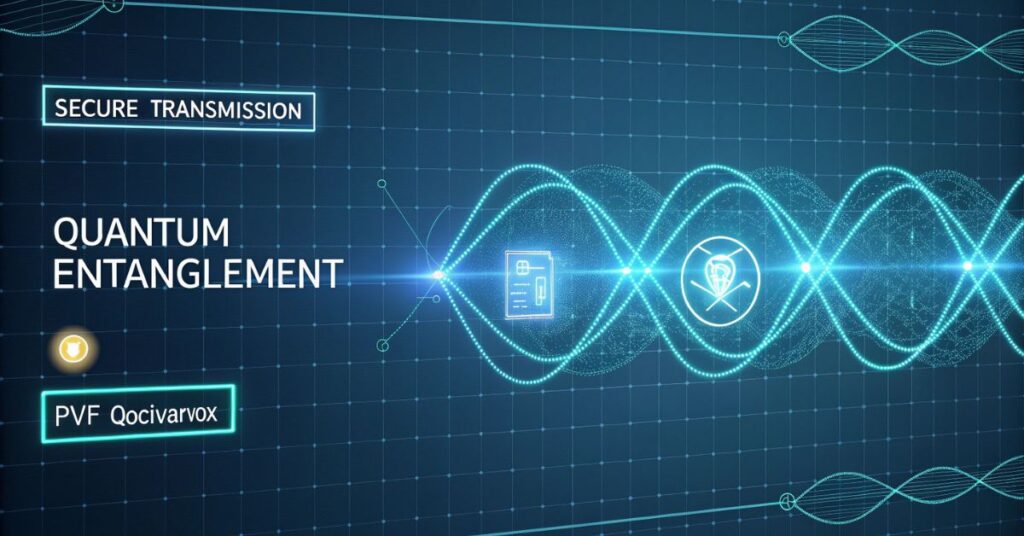PVF Qocivarvox — Simple Guide & Benefits!

In an era where digital security threats are evolving rapidly, traditional encryption methods are struggling to keep up. This is where PVF Qocivarvox comes in—a revolutionary quantum communication technology that promises unbreakable security using the principles of quantum entanglement.
By leveraging entangled photon pairs, PVF Qocivarvox ensures that any attempt to intercept data results in an immediate alert, making it virtually hack-proof. This technology has immense potential in government communication, banking security, space exploration, and military applications.
What is PVF Qocivarvox?

PVF Qocivarvox is an advanced quantum communication system that utilizes quantum entanglement to securely transmit data. Unlike conventional communication methods that rely on encryption, PVF Qocivarvox makes use of entangled photon pairs to send and receive messages in a way that is impossible to intercept without detection.
Key Concept: Quantum Entanglement
Quantum entanglement occurs when two or more particles become interconnected in such a way that the state of one particle is instantly linked to the state of the other, regardless of distance. If one particle is disturbed, the change is immediately reflected in its entangled partner. This principle is the backbone of PVF Qocivarvox’s security.
How Does PVF Qocivarvox Work?
Step 1: Generation of Entangled Photon Pairs
A quantum source generates pairs of photons that are entangled. These photons share a deep quantum connection, meaning any change to one photon is instantly mirrored in the other.
Step 2: Encoding Information
One of the entangled photons is manipulated to encode binary data (0s and 1s) using quantum states such as polarization or spin.
Step 3: Secure Transmission Over a Quantum Channel
The encoded photon is sent through a secure quantum channel to the receiver. Because of entanglement, the receiver’s photon automatically reflects the changes made to its twin.
Step 4: Instantaneous Reception and Detection
The receiver measures the properties of their photon to extract the encoded message. If anyone tries to intercept the transmission, the entanglement is disturbed, immediately alerting both sender and receiver to a security breach.
Related Post:Slothokiturbo.net – The Ultimate Gaming & Streaming!
Key Advantages of PVF Qocivarvox Over Traditional Communication!

Unbreakable Security:
Traditional encryption (e.g., RSA) can be cracked with sufficient computing power. PVF Qocivarvox, however, relies on quantum mechanics, where any eavesdropping attempt collapses the entangled state, making interception detectable.
Near-Instantaneous Data Transfer:
Since entangled particles communicate faster than light, PVF Qocivarvox enables real-time data transmission across global distances.
Immunity to Cyber Attacks:
Hackers cannot clone or intercept quantum information due to the No-Cloning Theorem, making PDF Qoci Warvox ideal for military, financial, and healthcare sectors.
What Are the Challenges and Limitations of PVF Qocivarvox?
- High Infrastructure Costs – Setting up quantum communication networks requires expensive specialized hardware.
- Technological Maturity – The technology is still in its early stages, requiring further research and development for widespread adoption.
- Environmental Sensitivity – Quantum signals can be easily disrupted by temperature changes, noise, or physical obstacles.
- Distance Limitations – Maintaining quantum entanglement over long distances is challenging, though researchers are working on quantum repeaters to extend the range.
- Limited Commercial Availability – PVF Qocivarvox is not yet accessible for everyday use, as it is primarily used in research and high-security environments.
- Scalability Issues – Expanding PVF Qocivarvox networks to a global scale remains a challenge due to the complexity of quantum infrastructure.
- Integration with Existing Systems – Most current communication systems rely on classical encryption, making seamless integration with PVF Qocivarvox difficult.
- Ethical and Regulatory Concerns – Governments and organizations need to establish laws and policies to regulate quantum communication and prevent misuse.
Recent Post:Heardle 60s — Music Game for 1960s Song Lovers!
What are the biggest obstacles to PDF Qoci Warvox adoption?
- High Implementation Costs – Building quantum communication infrastructure is expensive, limiting accessibility to governments and large institutions.
- Technological Limitations – The technology is still in early development, requiring further advancements to ensure stability and efficiency.
- Distance Constraints – Quantum entanglement weakens over long distances, making global deployment challenging without quantum repeaters.
- Integration with Existing Networks – Most current communication systems use classical encryption, making it difficult to merge with quantum-secure methods.
- Environmental Sensitivity – Quantum signals are easily disrupted by temperature changes, noise, and physical obstructions, affecting reliability.
- Regulatory and Ethical Concerns – Governments need to develop policies and standards to regulate quantum communication and prevent misuse.
Interesting Fact:Ztec100.com – The Future of Health & Insurance!
How fast is data transfer with PVF Qocivarvox?

PVF Qocivarvox offers ultra-fast data transfer by utilizing quantum entanglement, enabling near-instantaneous communication between entangled particles regardless of distance. Unlike traditional networks that rely on signals traveling through cables or satellites, this quantum-based system ensures that information is shared at the speed of light, making it ideal for high-security applications like government communications, financial transactions, and space exploration.
While practical large-scale deployment is still in progress, researchers are continuously improving the technology to overcome distance limitations and environmental challenges. As advancements continue, PVF Qocivarvox has the potential to revolutionize real-time, unbreakable data exchange worldwide.
FAQs:
What makes PVF Qocivarvox more secure than traditional encryption?
PVF Qocivarvox is safer because it uses quantum entanglement, which means any attempt to hack or spy on the data instantly changes it, alerting the sender and receiver. Unlike regular encryption, which can be broken by powerful computers, this system cannot be hacked.
Can PVF Qocivarvox be hacked?
No, it cannot be hacked because of the No-Cloning Theorem, which prevents quantum data from being copied or stolen. If someone tries to intercept the information, the quantum connection immediately breaks, making the attack useless and easy to detect.
What industries will benefit most from PVF Qocivarvox?
Industries like military, finance, healthcare, and space exploration will benefit the most. These fields need highly secure communication, and PVF Qocivarvox can protect important data from cyber threats.
When will PVF Qocivarvox be commercially available?
Experts believe PVF Qocivarvox will be available for public and business use within 10-15 years. Right now, it is still in the testing phase, with researchers and big tech companies working to improve it.
Does PVF Qocivarvox work over long distances?
At the moment, PVF Qocivarvox has distance limits, as quantum connections become weaker over long distances. However, scientists are developing quantum repeaters and satellites to help expand its range and make global quantum communication possible.
How does PVF Qocivarvox compare to quantum key distribution (QKD)?
QKD helps secure encryption keys, but PVF Qocivarvox allows direct, fully secure communication without the need for traditional encryption. This makes PVF Qocivarvox even safer than QKD because it removes the risk of stolen encryption keys.
Conclusion:
PVF Qocivarvox is a game-changing technology that promises unbreakable security and ultra-fast data transfer through quantum entanglement. Unlike traditional encryption, it instantly detects hacking attempts, making it one of the safest communication methods available.
While there are challenges, such as high costs, distance limitations, and the need for better infrastructure, scientists and tech companies are actively working to improve and expand its use.
Latest Post:






